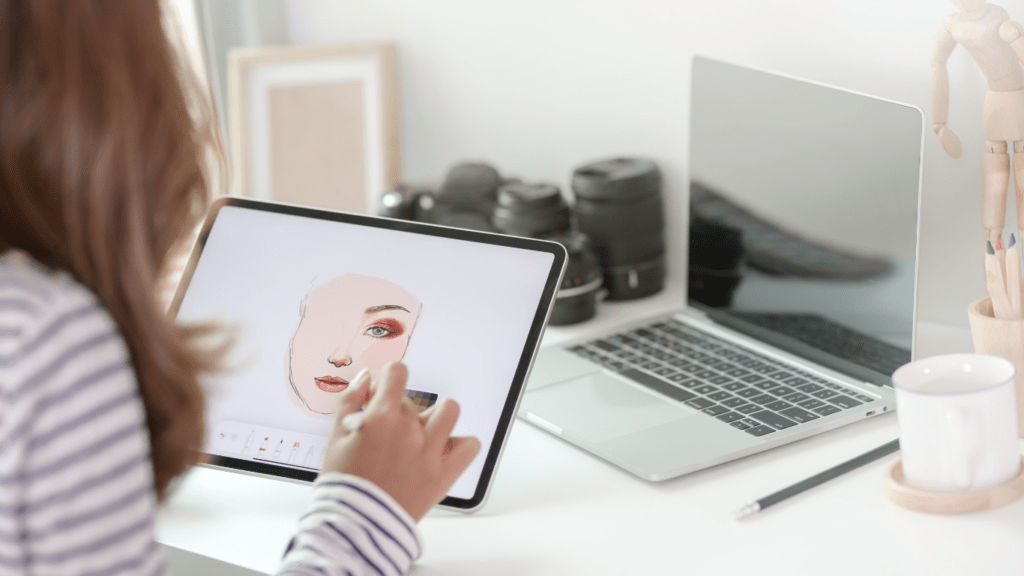The Evolution of Digital Art
Digital art has rapidly evolved, shaping modern design landscapes with its dynamic capabilities. This transformation roots from crucial technological advancements, allowing for an expanded creative toolkit.
From Pixels to Complex Creations
In its early days, digital art consisted of simple pixel-based designs. These basic compositions laid the groundwork for more intricate works. As software advanced, artists exploited vector graphics, 3D modeling, and complex algorithms to produce detailed and realistic designs.
For instance, the introduction of software like Adobe Photoshop and Illustrator allowed for complex layering techniques and photo manipulation. Programs like Blender and Cinema 4D enabled 3D modeling, making realistic animations and detailed textures possible. Contemporary digital artworks now range from hyper-realistic portraits to immersive virtual reality environments.
Key Pioneers in the Digital Art Space
Several key figures have driven digital art’s development. Andy Warhol, known for his pop art, experimented with Amiga computers in the 1980s, creating some of the earliest examples of digital art. Cory Arcangel, a contemporary artist, uses video game modifications and custom software to produce innovative pieces.
Another notable pioneer, Laurie Anderson combines performance art with digital media to create multimedia installations. Digital artists like Beeple (Mike Winkelmann) gained fame for creating digital collages and selling NFT art, showcasing the commercial potential of digital artworks.
These pioneers have not only expanded digital art’s boundaries but also inspired new generations to explore the synergies of art and technology.
How Digital Art Integrates into Modern Design

Digital art profoundly affects today’s design landscape, merging technology and creativity seamlessly. Various aspects of modern design now incorporate digital techniques to enhance aesthetics and functionality.
Influence on Graphic Design Trends
Digital art reshapes graphic design, leading to innovative trends. New styles, like glitch art and 3D typography, emerge due to advancing software capabilities. Graphic designers now use tools like Adobe Illustrator and Procreate to create intricate designs quickly.
For example, modern logos often feature gradients and complex textures that were once challenging to produce manually. Artists use digital mediums to experiment with visual effects, pushing traditional boundaries. The proliferation of online platforms also allows designers to share and gather inspiration globally, further influencing design trends.
Digital Art in User Interface Design
User interface (UI) design benefits significantly from digital art. UI designers incorporate digital art to create visually pleasing and intuitive interfaces. They utilize iconography, elaborate animations, and micro-interactions to enhance user experiences. Applications like Sketch and Figma empower designers to develop and prototype UIs with precision.
Examples include mobile app interfaces that use vibrant, high-res images and interactive elements, making navigation intuitive. Digital art enables rapid iteration and testing, ensuring that designs meet user needs efficiently. It’s clear that digital art’s role in UI design has transformed how developers approach creating digital products.
Impact of Technology on Digital Art
Technological advancements have significantly impacted digital art, reshaping both creation and consumption. From cutting-edge software to AI-driven tools, technology continuously evolves the artistic landscape.
Software Tools and Platforms
Modern digital art heavily relies on sophisticated software tools and platforms. I use industry standards like;
- Adobe Photoshop
- Illustrator
- After Effects
for various creative processes. Procreate, popular on the iPad, offers a versatile workflow for illustrators and artists on the go. Corel Painter mimics traditional painting techniques through digital means.
Platforms like Behance and ArtStation provide artists with exposure, networking opportunities, and client connections. They showcase portfolios, fostering a global creative community. My experience with these platforms showcases their power in expanding artistic reach.
The Role of AI in Artistic Creation
AI’s role in artistic creation is growing rapidly. Tools like DeepArt and RunwayML leverage machine learning to generate unique art pieces. I use Neural Style Transfer to blend photograph styles, creating hybrid visuals that combine traditional and modern aesthetics.
Generative Adversarial Networks (GANs) push the boundaries of creativity further. GANs enable the creation of new, previously unimagined visuals. DALL-E and GPT-3, notable AI models from OpenAI, demonstrate AI’s potential in generating text-based and visual art.
By integrating AI, digital artists can automate repetitive tasks, explore new artistic styles, and enhance their creative processes, reflecting AI’s transformative impact on the art world.
Case Studies: Digital Art Transforming Design
Digital art’s impact on modern design is undeniable, with numerous case studies highlighting its transformative power.
Success Stories in Advertising
- Nike’s “Dream Crazy” campaign featuring Colin Kaepernick, created in 2018, used sophisticated digital art to craft compelling visuals. This campaign, showcasing a mix of live-action and digital illustration, increased Nike’s sales by 31% in the first month alone, demonstrating how digital art can drive commercial success.
- Coca-Cola’s “Share a Coke” campaign utilized digital art to customize bottles with individual names. Launched in the US in 2014, this campaign led to a 2% increase in U.S. sales after over a decade of decline, marking a significant success story in how personalization via digital art can rejuvenate a brand.
Innovations in Web Design
Apple’s website redesign in 2020 exemplified the integration of digital art in web design. Utilizing minimalistic digital illustrations and animations, Apple enhanced user interface and engagement. This approach not only matched their design ethos but also improved user experience, increasing the site’s conversion rates significantly.
Airbnb revamped its website in 2021, employing 3D graphics and interactive digital components. These innovations resulted in a more immersive user experience, increasing the average session duration by 15%, highlighting the potential of digital art in elevating web design.
Digital art continues to redefine how companies approach design in advertising and web interfaces, offering new ways to captivate and engage audiences. These case studies illustrate the substantial impact it has on modern design’s landscape.

 Anna Freehill, a key contributor to Avant Garde Artistry Hub, plays a vital role in shaping the platform’s vision. As an author and collaborator, she helps bridge the worlds of art and technology, offering insightful articles that guide artists through the rapidly evolving creative landscape. Anna’s dedication to highlighting art's therapeutic value has contributed to the platform’s focus on mental and emotional well-being through creative expression.
Her involvement in building Avant Garde Artistry Hub has been instrumental in providing valuable resources to artists seeking to enhance their careers. Whether through her writing on business strategies or her support in platform development, Anna is committed to fostering a space where artists can thrive and embrace the future of art.
Anna Freehill, a key contributor to Avant Garde Artistry Hub, plays a vital role in shaping the platform’s vision. As an author and collaborator, she helps bridge the worlds of art and technology, offering insightful articles that guide artists through the rapidly evolving creative landscape. Anna’s dedication to highlighting art's therapeutic value has contributed to the platform’s focus on mental and emotional well-being through creative expression.
Her involvement in building Avant Garde Artistry Hub has been instrumental in providing valuable resources to artists seeking to enhance their careers. Whether through her writing on business strategies or her support in platform development, Anna is committed to fostering a space where artists can thrive and embrace the future of art.